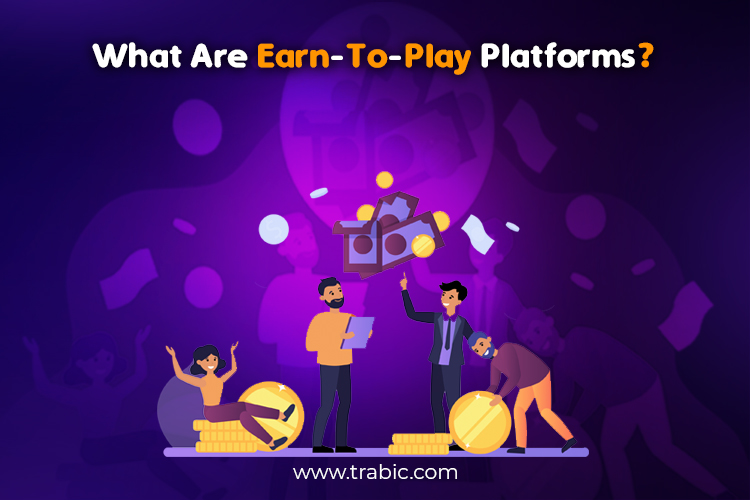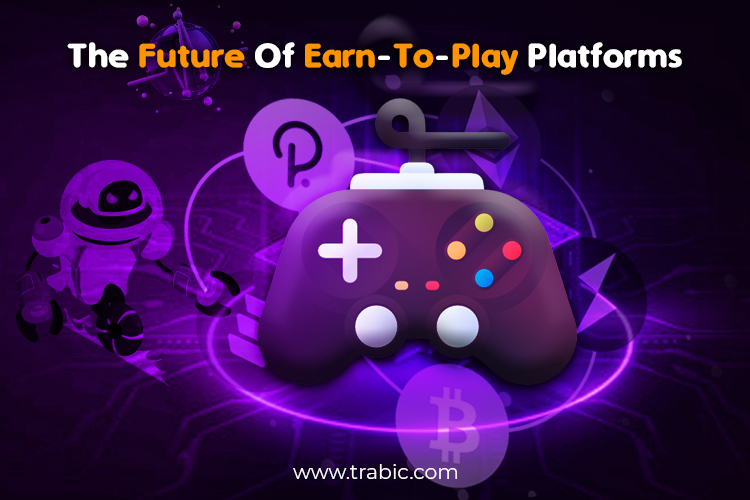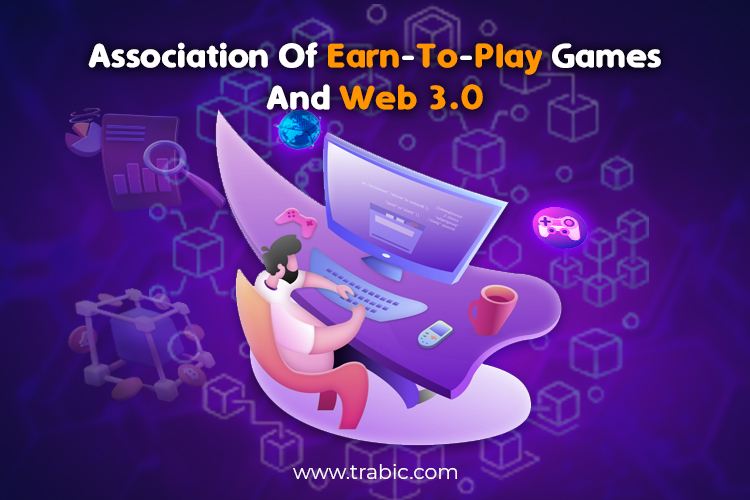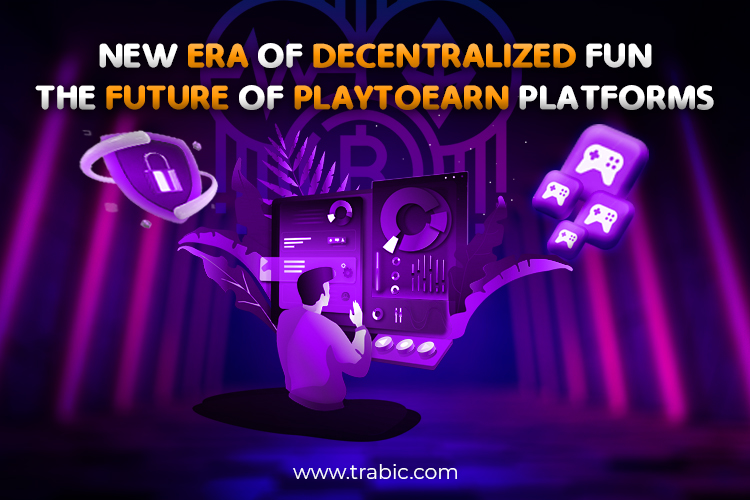What Are Earn-To-Play Platforms?

Earn-to-play platforms are blockchain-based platforms that allow gamers to earn cryptocurrency tokens by playing games. These platforms use blockchain technology to track and verify in-game achievements and reward players with cryptocurrency tokens for their participation.
On earn-to-play platforms, gamers can earn cryptocurrency tokens by completing in-game tasks, such as solving puzzles, completing quests, and achieving high scores. These tokens can be used to purchase in-game items, trade with other players, or exchange for other cryptocurrencies or fiat currencies. One of the critical benefits of earn-to-play platforms is that they provide gamers with a new way to monetize their skills and time spent playing games. This is particularly beneficial for gamers in developing countries, where traditional job opportunities may be limited.
Additionally, earn-to-play platforms can help address fraud and cheating issues in the gaming industry by providing a transparent and secure way to track and verify in-game achievements. Some examples of earn-to-play platforms include Enjin, which allows gamers to earn Enjin Coin by playing games integrated with the Enjin platform, and Ultra. This blockchain-based gaming platform allows gamers to earn Ultra Coins by completing in-game achievements.
Hence, earn-to-play platforms are an innovative use of blockchain technology that provides gamers with a new way to monetize their skills and time spent playing games. As the industry of crypto platforms evolves continuously, we expect to see more earn-to-play platforms emerge, offering gamers new opportunities to earn cryptocurrency tokens through gameplay.
What Is The Future Of Earn-To-Play Platforms?

Earn-To-Play platforms, also known as earn-to-play platforms, have gained significant attention in the cryptocurrency industry in recent years. These platforms permit users to acquire cryptocurrency by playing games, and they can potentially revolutionize the gaming industry by providing a unique path for gamers to monetize their skills and time consumed playing games.
The future of Earn-To-Play platforms is still being determined, but there is significant potential for growth and innovation in this space. As the gaming and cryptocurrency industries evolve, new Earn-To-Play platforms emerge, each with unique features and benefits. Here are some key factors that could impact the future of Earn-To-Play platforms:
Increased Adoption
As more gamers become aware of Earn-To-Play platforms and the potential to earn cryptocurrency, we expect to see increased adoption. This could lead to more games being developed specifically for play-to-earn platforms and a more extensive user base overall. Increased adoption is one of the critical factors that could impact the future of play-to-earn platforms.
As more gamers become aware of the potential to earn cryptocurrency by playing games, we expect to see increased adoption of these platforms. This could lead to more games being developed specifically for Earn-To-Play platforms and a more extensive user base overall.
The potential to earn cryptocurrency by playing games has the prospect to demand from a broad range of gamers, including casual players, professional gamers, and esports enthusiasts. As Earn-To-Play platforms continue to gain popularity, we can expect more players to experiment with these platforms and more games to be developed specifically for this market.
This increased adoption could also drive innovation in the space, with developers and entrepreneurs exploring new ways to incentivize gameplay and monetize player activity. This could lead to new features and benefits for gamers and new revenue opportunities for developers and publishers. Increased adoption is a crucial driver of growth and innovation in the play-to-earn space, and it will likely persist in playing a meaningful role in shaping the future of these platforms.
Regulatory Challenges
One potential challenge for play-to-earn platforms is regulatory scrutiny. Governments and regulators worldwide are still trying to understand and regulate the cryptocurrency industry, and play-to-earn platforms could face additional regulatory challenges due to their unique business model. Regulatory challenges are a critical factor that could impact the future of play-to-earn platforms. As with any new technology or industry, there will likely be regulatory hurdles to overcome as play-to-earn platforms continue to gain popularity.
One potential regulatory challenge is related to the classification of cryptocurrencies. There is no standardized approach to classifying cryptocurrencies; different countries and jurisdictions have taken different approaches. This could create challenges for play-to-earn platforms, which rely on cryptocurrencies for payment and reward.
Another potential regulatory challenge is related to gambling laws. Play-to-earn platforms could be considered gambling in some jurisdictions, subjecting them to strict regulations and licensing requirements. This could make it difficult for play-to-earn platforms to operate in certain jurisdictions or limit the types of games or rewards available on these platforms.
Finally, there may be concerns about player safety and protection. As with any online platform, there is a risk of fraud, hacking, or other malicious activity. Play-to-earn platforms may need to take additional steps to ensure the safety and protection of their users, which could increase costs and regulatory compliance requirements. Regulatory challenges could significantly impact the future of play-to-earn platforms. Platforms that can navigate these challenges effectively and establish themselves as legitimate and safe options for players are likely to be the most successful in the long term.
Competition
As play-to-earn platforms continue gaining popularity, we expect increased competition. This could lead to a proliferation of platforms, each with unique features and benefits. Competition is a critical factor that could impact the future of play-to-earn platforms. As the popularity of these platforms continuously evolves, we can expect to see increased competition from other platforms and gaming companies that are looking to capitalize on this trend.
One potential challenge for play-to-earn platforms is the increasing number of gaming companies starting to incorporate cryptocurrency and blockchain technology into their games. This could create more options for gamers interested in earning rewards or cryptocurrency through gameplay, but it could also lead to more competition for play-to-earn platforms.
Another potential challenge is related to user acquisition and retention. As more platforms enter the market, it could become more difficult for individual platforms to stand out and attract and retain users. Platforms that can differentiate themselves through unique features, compelling rewards, or other value propositions will likely be the most successful in this competitive environment.
Finally, there may be challenges related to scaling and infrastructure. As the user base of play-to-earn platforms grows, they may need to invest in additional infrastructure to support increased usage and transaction volume. Platforms that cannot keep up with user demand may need help to compete effectively with other platforms in the market. Competition is likely a significant factor shaping the future of play-to-earn platforms. Platforms that can differentiate themselves and offer unique value propositions to users are likely the most successful in this competitive environment.
Integration with Traditional Gaming
One potential avenue for growth for play-to-earn platforms is integration with traditional gaming platforms. If play-to-earn platforms can be integrated into popular games and gaming platforms, it could increase awareness and adoption of these platforms. Integration with traditional gaming is another crucial factor that could impact the future of play-to-earn platforms. As more traditional gaming companies embrace blockchain technology and cryptocurrencies, we expect more opportunities for play-to-earn platforms to partner with these companies and offer their users new and exciting ways to earn rewards.
One potential benefit of integrating with traditional gaming is tapping into a more extensive user base. Traditional gaming companies often have large and dedicated fan bases, and by partnering with these companies, play-to-earn platforms could potentially reach new users and expand their reach. In addition, integrating with traditional gaming could help play-to-earn platforms address some of the scalability and infrastructure challenges they may face as they grow. Traditional gaming companies often have robust infrastructure and expertise in scaling their products to handle large user bases.
This could be invaluable for play-to-earn platforms looking to grow and expand. However, there may also be challenges associated with integrating with traditional gaming companies. For example, these companies may have existing partnerships and business relationships that could limit their ability to work with play-to-earn platforms.
In addition, there may be regulatory challenges associated with integrating with traditional gaming, mainly if the rewards offered through play-to-earn platforms are considered a form of gambling. The integration with traditional gaming could significantly impact the future of play-to-earn platforms. Platforms that can successfully partner with traditional gaming companies and offer compelling rewards to users are likely the most successful in this space. However, there may also be challenges associated with this integration, particularly around regulatory compliance and competition from other platforms.
New Revenue Models
Play-to-earn platforms could also drive new revenue models for game developers and publishers. For example, game developers could earn a percentage of the cryptocurrency players earn on their platform or charge a fee to integrate their games with play-to-earn platforms. New revenue models are another critical factor that could impact the future of play-to-earn platforms. As these platforms continue to grow and evolve, we expect to see new and innovative ways to generate revenue beyond traditional advertising and transaction fees.
One potential revenue model for play-to-earn platforms is creating and selling in-game assets. These platforms could create and sell unique in-game assets that players can use to enhance their gameplay experience. This could include everything from special weapons and armor to unique cosmetic items that allow players to stand out.
By creating and selling these assets, play-to-earn platforms could generate additional revenue while enhancing the overall user experience. Another potential revenue model uses non-fungible tokens (NFTs) to create unique and collectible items that players can buy, sell, and trade. NFTs are unique digital assets that cannot be replicated, making them valuable to collectors and gamers.
Play-to-earn platforms could create and sell NFTs tied to specific games or achievements, allowing players to own a piece of gaming history and generating additional revenue for the platform. Additionally, play-to-earn platforms could offer subscription-based services that provide users entry to premium content, components, and rewards.
For example, a platform could offer a premium subscription service that provides users access to exclusive in-game items, early access to new games and features, and other perks. Playing-to-earn platforms could generate recurring revenue by offering these premium services while providing users additional value. New revenue models could play a critical role in the future of play-to-earn platforms.
Platforms that can develop innovative and compelling revenue models that provide value to users and the platform itself are likely the most successful in this space. However, challenges may also be associated with these new revenue models, particularly around regulatory compliance and user acceptance.
How Are Earn-To-Play Games Related To Web 3.0?

The rise of Web 3.0 has been a hot topic in technology and gaming. This new era of the internet promises to bring about a decentralized and more secure web experience and provide new opportunities for the gaming industry. One such opportunity is the emergence of earn-to-play games, which have become increasingly popular in the gaming world. These games offer a new way for players to earn rewards and monetize their gameplay, all while contributing to the development of Web 3.0.
Earn-to-play games are a type of game that allows players to earn exciting rewards by completing various in-game tasks and challenges. These rewards can then be used to purchase items within the game or even exchanged for real-world currency. This concept of “earning while playing” has been around for some time, but Web 3.0 has opened up new possibilities for this type of gameplay.
Web 3.0, renowned as the decentralized web, is a new phase of the internet that seeks to provide a more secure and transparent online experience. Unlike Web 2.0, characterized by centralized platforms and services, Web 3.0 is based on decentralized networks and blockchain technology. This technology allows for more secure transactions and eliminates the need for intermediaries, such as financial institutions or banks.
Earn-to-play games are closely related to Web 3.0 because they utilize blockchain technology to enable players to earn rewards and exchange them for real-world currency. This technology allows for a more transparent and secure transaction process, ensuring players receive fair gameplay compensation. In addition, earn-to-play games are often built on decentralized networks, which further enhances their compatibility with the principles of Web 3.0.
One example of an earn-to-play game that utilizes Web 3.0 technology is Axie Infinity. This game is built on the Ethereum blockchain and allows players to earn a cryptocurrency called “AXS” by playing the game. Players can then use this cryptocurrency to purchase in-game items or exchange it for real-world currency. Axie Infinity is an excellent example of how earn-to-play games can utilize Web 3.0 technology to create a more secure and transparent gaming experience.
Another way earn-to-play games relate to Web 3.0 is through their use of non-fungible tokens (NFTs). NFTs are a type of cryptocurrency representing unique digital assets, such as in-game items or collectibles. Earn-to-play games often use NFTs to allow players to buy, sell, and trade unique items. This provides players with a more personalized and customizable gaming experience and a way to earn real-world income.
Play-to-earn (P2E) games are a new online gaming experience that leverages blockchain technology and cryptocurrencies to reward players for their in-game activities. P2E games are related to Web 3.0, also known as the decentralized web, because they are built on blockchain technology, a vital component of the decentralized web. Web 3.0 seeks to create a more open, transparent, and decentralized internet, where users have more control over their data and online experiences.
P2E games are a promising application of Web 3.0 technology because they create a more transparent and fair gaming ecosystem where players can earn real money or cryptocurrency for their in-game activities. This is possible using non-fungible tokens (NFTs) and other blockchain-based assets to represent in-game items and currency. P2E games depart from traditional gaming models where players typically pay upfront for a game or in-game items.
Instead, P2E games allow players to earn real value for their in-game actions, which can be used to purchase other in-game items, traded for other cryptocurrencies or fiat currencies, or even used in the real world. This creates a new revenue model for players and game developers, where the value generated by the game is distributed more equitably among all participants. P2E games are also related to Web 3.0 because they create a more community-driven gaming experience where players can collaborate and compete in a more openly and decentralized way.
P2E games often incorporate social media and other Web 3.0 technologies to create a more immersive and engaging player experience. However, there are also challenges to integrating P2E games into Web 3.0. These challenges include regulatory issues, security concerns, and the need for greater interoperability between different blockchain-based platforms. Nevertheless, P2E games represent a promising application of Web 3.0 technology that could revolutionize the gaming industry and create new opportunities for players and game developers.
In conclusion, earn-to-play games are closely related to Web 3.0 because they use blockchain technology and non-fungible tokens. These games offer a new way for players to earn rewards and monetize their gameplay while also contributing to developing a more transparent and secure online experience. As Web 3.0 evolves continuously, we will likely see more innovative uses of this technology in the gaming industry.
